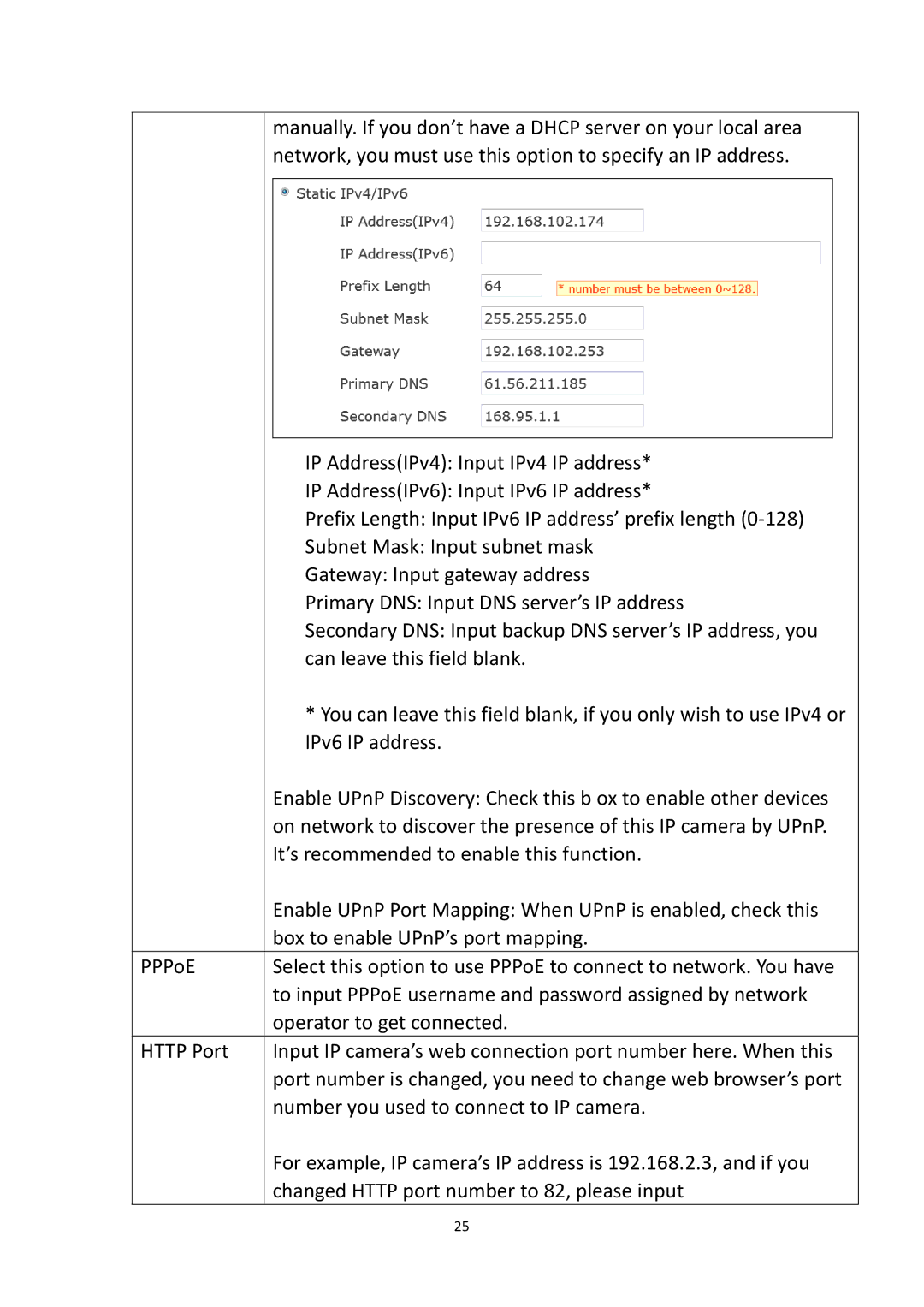
manually. If you don’t have a DHCP server on your local area network, you must use this option to specify an IP address.
IP Address(IPv4): Input IPv4 IP address*
IP Address(IPv6): Input IPv6 IP address*
Prefix Length: Input IPv6 IP address’ prefix length
Subnet Mask: Input subnet mask
Gateway: Input gateway address
Primary DNS: Input DNS server’s IP address
Secondary DNS: Input backup DNS server’s IP address, you can leave this field blank.
*You can leave this field blank, if you only wish to use IPv4 or IPv6 IP address.
| Enable UPnP Discovery: Check this b ox to enable other devices |
| on network to discover the presence of this IP camera by UPnP. |
| It’s recommended to enable this function. |
| Enable UPnP Port Mapping: When UPnP is enabled, check this |
| box to enable UPnP’s port mapping. |
PPPoE | Select this option to use PPPoE to connect to network. You have |
| to input PPPoE username and password assigned by network |
| operator to get connected. |
HTTP Port | Input IP camera’s web connection port number here. When this |
| port number is changed, you need to change web browser’s port |
| number you used to connect to IP camera. |
| For example, IP camera’s IP address is 192.168.2.3, and if you |
| changed HTTP port number to 82, please input |
| 25 |
